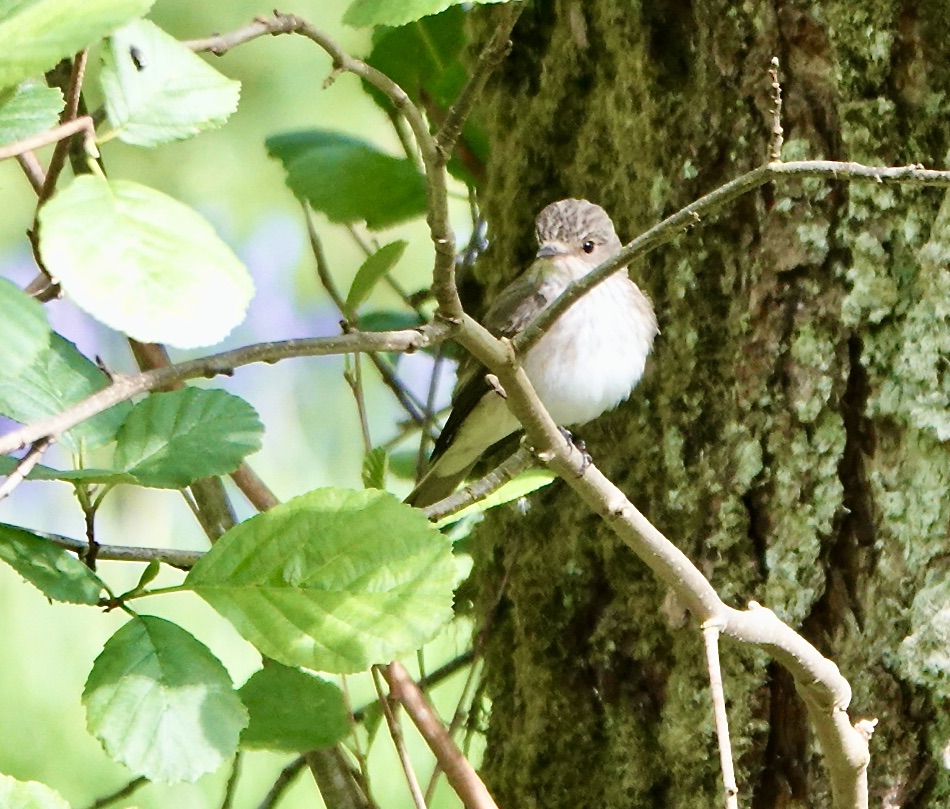Wildlife jottings Jun 2023
As Spring moves into Summer bird song quietens down. The adults are now busy feeding and protecting their youngsters and for some species producing second and maybe even third broods of young. Robins, Blackbirds, Blackcaps, Chiffchaff and Song Thrushes are still singing well and can be heard often throughout the day.
We now have hedgerows full of wildflowers to enjoy with Butterflies and moths on the wing.
Two pleasant and unusual visitors to my garden over the last few days have been a Beautiful Demoiselle and a Broad-bodied Chaser. Both are types of Dragonfly and one would normally expect them near water. Whilst I have some bird baths in the garden there is no running water or a pond to attract such exotic creatures.
The Demoiselle whipped through the garden quickly – allowing me sufficient time to identify it but not to grab my camera. It is called a Beautiful Demoiselle for good reason, a real stunner. The Broad-bodied chaser was much more obliging. See photo below:

The tail is a lovely shade of blue. And this is quite a big creature. The abdomen / tail is at least an inch long. It kept coming back to the bamboo cane that is ready for my tomato crop!
One of the highlights of the Spring has been the amount of blossom on the Hawthorn bushes. The word haw is simply old English for Hedge so literally a thorny hedge – as anybody who has tried to walk through / too close to a Hawthorn will know. They flowered a little late this year but have made up for it with a beautiful display of flowers. Lots of insects rely on the Hawthorn for food – just look up ‘Hawthorn and Insect’ on Google and you are spoilt for choice. Perhaps the subject of a future article when I have more photos to show you.
Hopefully with lots of flowers on the Hawthorn that will mean there are lots of berries (confusingly called haws), this Autumn. But it does not necessarily follow – this will rely on how many are pollinated. There has been much in the newspapers over the past few weeks about how few insects there are this year. Moths, a large class of insect, are a major pollinator, and I can certainly vouch for the fact that there are less around this year than last – my moth trap is capturing very few moths at the moment.
Is the lack of insects a concern, well yes but we need to be careful not to draw the wrong conclusions. With insects it is very much a case of feast or famine. The population of a particular species can vary considerably from one year to the next. They usually have the ability to produce multiple young in a short period of time and therefore if the conditions are right they can recover very quickly. Overall, there is much evidence to indicate the numbers of insects (and lots of other species) are declining.
Turning to my favourite part of natural history I am enjoying my early morning walks around the village and spotting the bird life. A few highlights:
Spotted flycatchers have turned up from their Spring migration in and around the church yard. They arrived back at the end of May – they are a late arriving migrant.

Kestrels seem to have mostly disappeared from the village – a bad year for them. Just an occasional sighting.
Barn owls – probably at least two breeding pairs in and around the village.
House martins and Swallows have arrived back from migration – a little later than expected due to northerly winds / bad weather slowing them down.
Tree pipits – at least two breeding pairs in and around the village. A ‘boring’ brown job – I know – but this is not a common bird and it is good we have a population of them.
Cuckoo – very few reports of them locally. We are all familiar with the call of the male – sadly very much declining in our area and much of the south west.
Wrens are absolutely everywhere. The mild Winters have helped their population grow. You can hear them singing all over the village from, usually deep within a hedge or an ivy clad tree.
Do carry on telling me about your sightings. It is great to hear from you and to be told about things that I may have missed. My email is johnhalelho@btinternet.com.